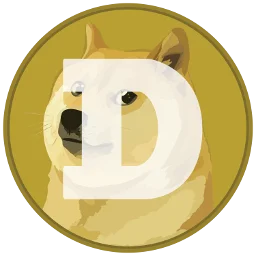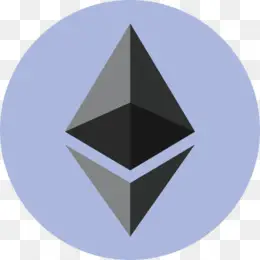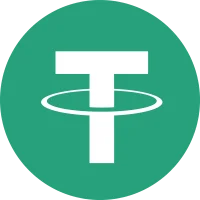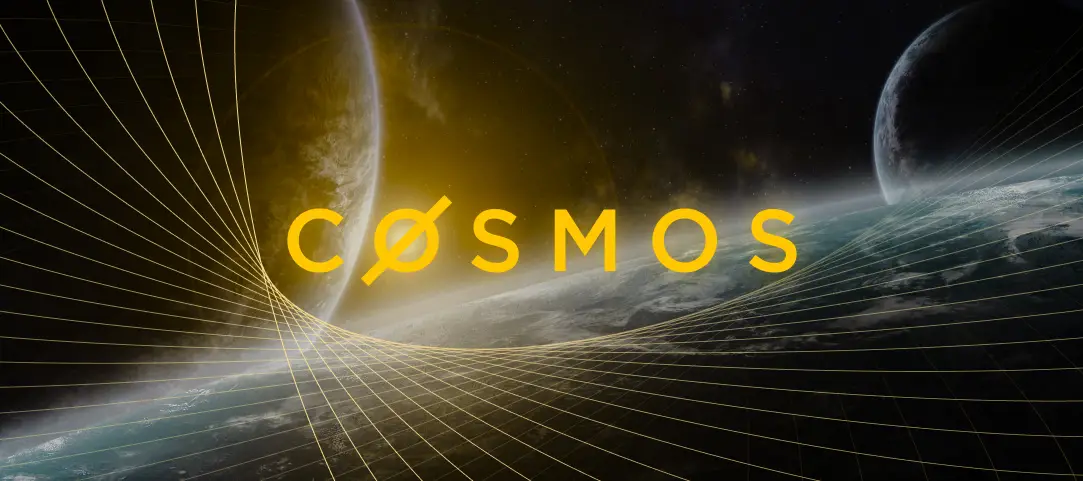Cosmos Hub (Atom)

Rank: 55
Atom to USD Chart
Converter Atom to USD

Cosmos network and Atom token explained
Imagine the universe. Planets are slowly spinning around their orbits to form systems and galaxies. Stars are born, giving life to millions of species. Little satellites are navigating through time and space to reach new, uncharted lands.
Cosmos is much closer than it seems. And you can be a bigger part of it.
How so? The thing is, Cosmos is not just outer space but a whole universe here on Earth, with its own planetary systems and stars.
Today, we’ll be happy to guide you into the fascinating universe of the Cosmos ecosystem. So buckle up, and 3… 2… 1… Lift off!
Understanding the Cosmos ecosystem

As of Ferbuary 1 2023, Cosmos is one of the most successful blockchain ecosystems, with 260+ integrated apps and services and a total market capitalization of $60.97B.
That’s pretty impressive, huh? But it doesn’t really answer the question you might have: what is Cosmos exactly, and how does it work? Give us a second, we’re getting to it.
Cosmos is an extremely powerful, customizable, scalable, and interoperable ecosystem of connected blockchains. It is often referred to as “the Internet of Blockchains,” and it completely lives up to this name.
Cosmos aims to create a fully functional blockchain universe where all apps, chains, and services work in perfect harmony. That is why the ecosystem allows blockchains to communicate freely with each other, transferring data with no intermediaries.
Such functionality is enabled by blockchain technology and a special protocol called the Inter-Blockchain Communication (IBC) protocol, which takes care of full blockchain interoperability. IBC helps protocols to avoid using bridges and facilitates the overall functioning of the system for all parties.
Cosmos architecture
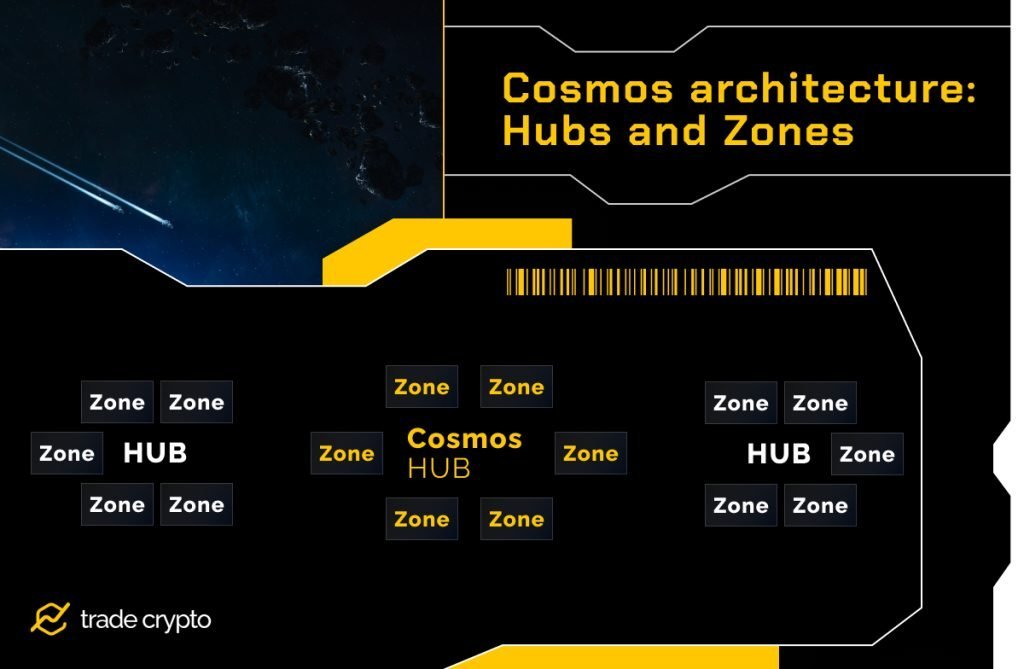
We’ll get back to the IBC later. Now, let’s deal with the more important question – the overall Cosmos structure.
The Cosmos team was a pioneer in the Hub & Spoke blockchain architecture, which was adopted from the traditional business sphere.
The ecosystem is composed of two different types of blockchains – hubs and zones. Hubs act as routers to zones, while zones serve as application-specific blockchains. Eventually, all zones are connected to hubs, while hubs might be connected with each other to facilitate data transfer.
As a result of such a solution, all open-source blockchain projects built on Cosmos become interconnected and interoperable, creating the desired image of a harmonic universe.
What is the Cosmos Network?
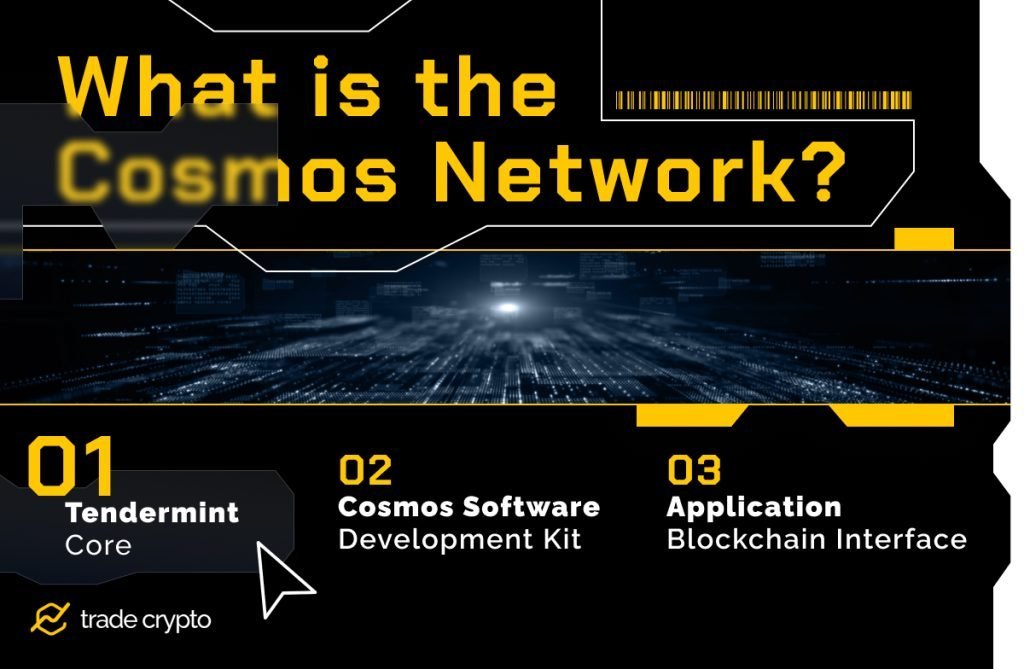
Cosmos network is a Layer 0 blockchain, which means that it is a foundation for many Layer 1 blockchains in the ecosystem, such as Binance Chain, Terra, and Cosmos Hub.
The Cosmos network consists of three primary parts:
- Tendermint Core – software that serves as the heart of the Cosmos network. It contains the IBC protocol that we mentioned before and the Tendermint Byzantine Fault Tolerance, a classical Byzantine Fault Tolerant (BFT) consensus algorithm.
- Cosmos Software Development Kit (SDK) – an open-source framework for building and deploying new blockchains and applications in the Cosmos ecosystem.
- Application Blockchain Interface (ABCI) – the protocol connecting chains and applications built on Cosmos with the Tendermint Core.
Cosmos is based on the Bonded Proof-of-Stake (BPoS) consensus mechanisms. This energy-efficient solution allows protocol owners to secure the network and helps token holders to earn rewards for staking.
All the dApps created in the ecosystem are developed and managed with the help of these instruments. However, applications are not deployed on the Cosmos Network directly, but rather on the independent Layer 1 blockchains on Cosmos, such as the Cosmos Hub.
What is the Cosmos Hub?
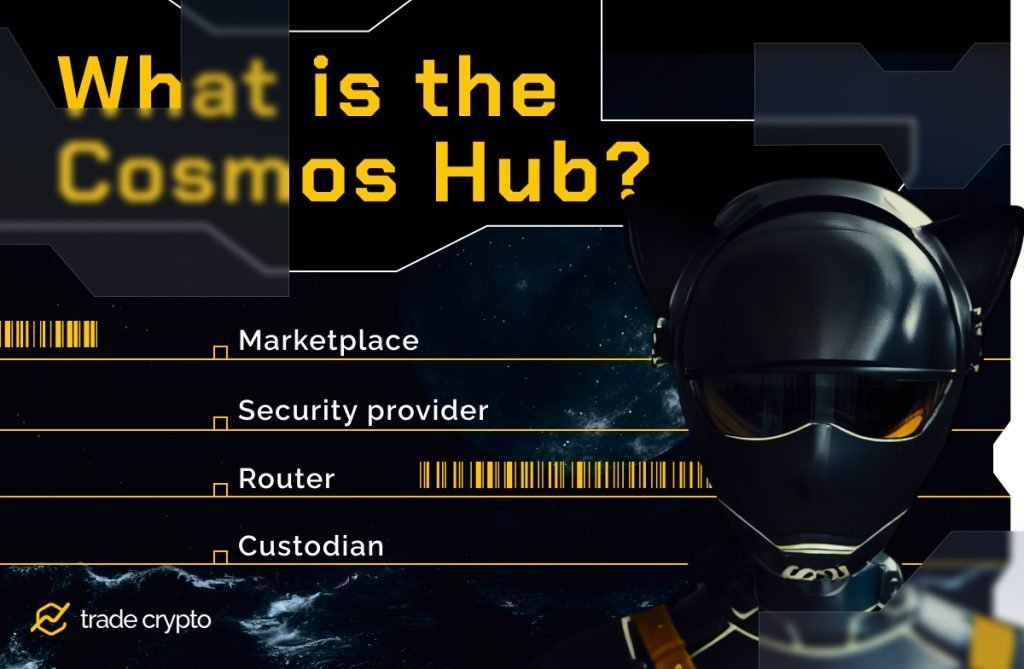
Regardless of the common misconception, Cosmos Network and Cosmos Hub are two different things.
The Cosmos Hub is a Layer 1 blockchain that was deployed on the Cosmos Network in 2019, becoming the first blockchain in the ecosystem. It is a Proof-of-Stake blockchain that provides vital services to the ecosystem and its users.
The Cosmos Hub plays an essential role in the network. Its functionality includes the following:
- Marketplace. The Hub operates an innovative decentralized exchange that allows users to swap tokens among different Cosmos blockchains, with low fees and instant confirmation.
- Security provider. As the users stake ATOM tokens, they help secure the chain. Soon, ATOM will assist in securing other blockchains of the Cosmos protocol.
- Router. The Hub connects independent blockchains with each other and with outer chains, by using the IBC protocol and different decentralized bridges.
- Custodian. The Cosmos Hub is the most reliable place to hold digital assets and manage accounts within the ecosystem.
The Cosmos Hub is fully governed by the holders of ATOM, the chain’s native utility and governance token.
What is Cosmos crypto? ATOM coin explained
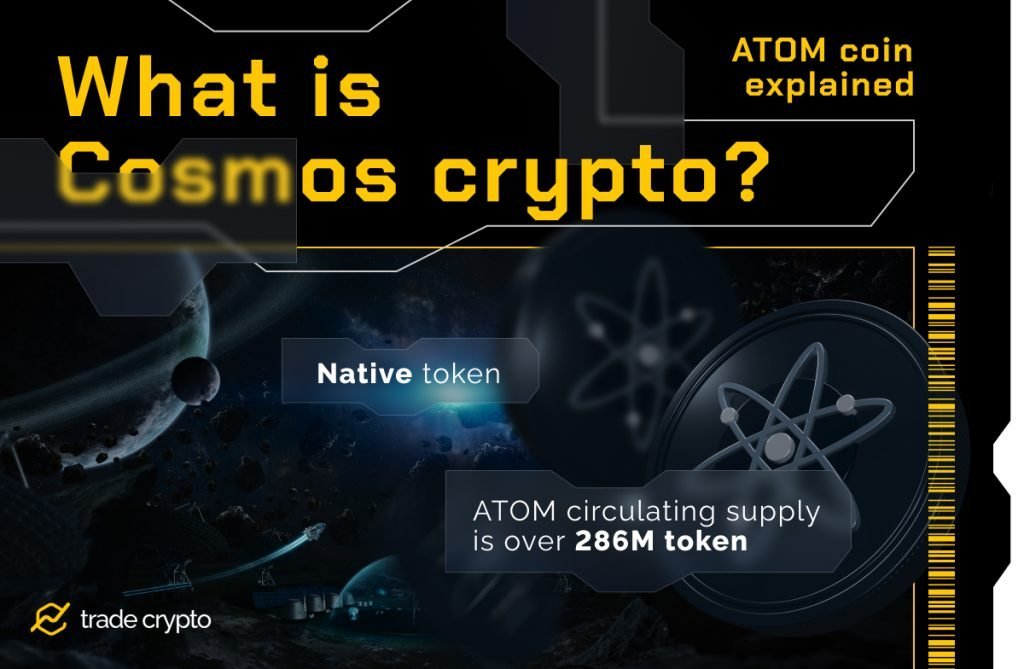
If Cosmos is a universe, the ATOM token is the stardust that everything is made of. It is the native token of the Cosmos Hub that serves as the incentivization method and the only instrument for blockchain governance.
In contrast to some coins, like Pi, Cosmos ATOM has real utility in the ecosystem and is used to secure the entire network. To do so, users stake tokens and validate transactions, thus ensuring chain security and receiving a part of the transaction fee as a reward.
The Cosmos Hub has 175 Cosmos validators, but this number can be increased in the future with the help of governance proposals.
Validator nodes are determined by the total number of tokens delegated to them. Other users can easily delegate ATOM to the chosen validator in order to get a share of staking rewards.
Cosmos ATOM tokenomics
The initial fundraising for the development of the Cosmos ecosystem was conducted through an ICO in 2017. It allowed Interchain Foundation to raise $17M to begin working on the project.
According to the planned distribution, 5% of the total supply was allocated to seed investors, 10% went to Tendermint Inc, which took care of the consensus algorithm and most of the software development, and 10% was left to Interchain Foundation. The majority of the ATOM tokens (75%) depended on the success of the fundraisers.
At the time of writing, the ATOM circulating supply is over 286M tokens, and there is no limit to the total number of tokens, so it will grow exponentially. As of September 29, 2022, the token’s 24-hour trading volume amounts to $419M, with a market cap of $3.6B.
Cosmos price
Similar to other cryptocurrencies, the price of ATOM depends on many factors, including demand, the overall crypto market trends, ecosystem development, and even insights from the Cosmos team.
As of September 29, 2022, the price of the ATOM token is $12.60.
Considering the current situation in the blockchain market, the Cosmos price will fluctuate in the near future, so it is highly recommended to watch the market closely if you choose to buy or sell Cosmos.
How to buy Cosmos ATOM
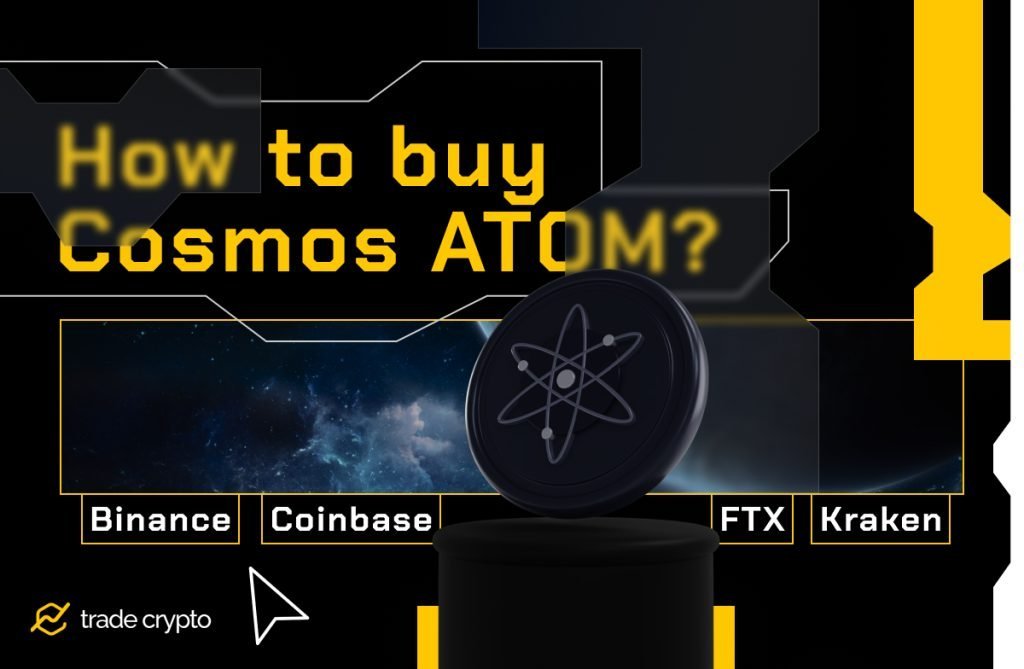
You can trade Cosmos ATOM on many popular cryptocurrency exchanges, including Binance, Coinbase, FTX, Kraken, etc. However, the price of Cosmos might differ depending on the platform, so make sure to do your own research before making the final DEX choice.
What about other Cosmos blockchains?
On top of the Cosmos Hub, the ecosystem connects 263 other blockchains, apps, and services in the areas of decentralized finance, data privacy, smart contract development, etc.
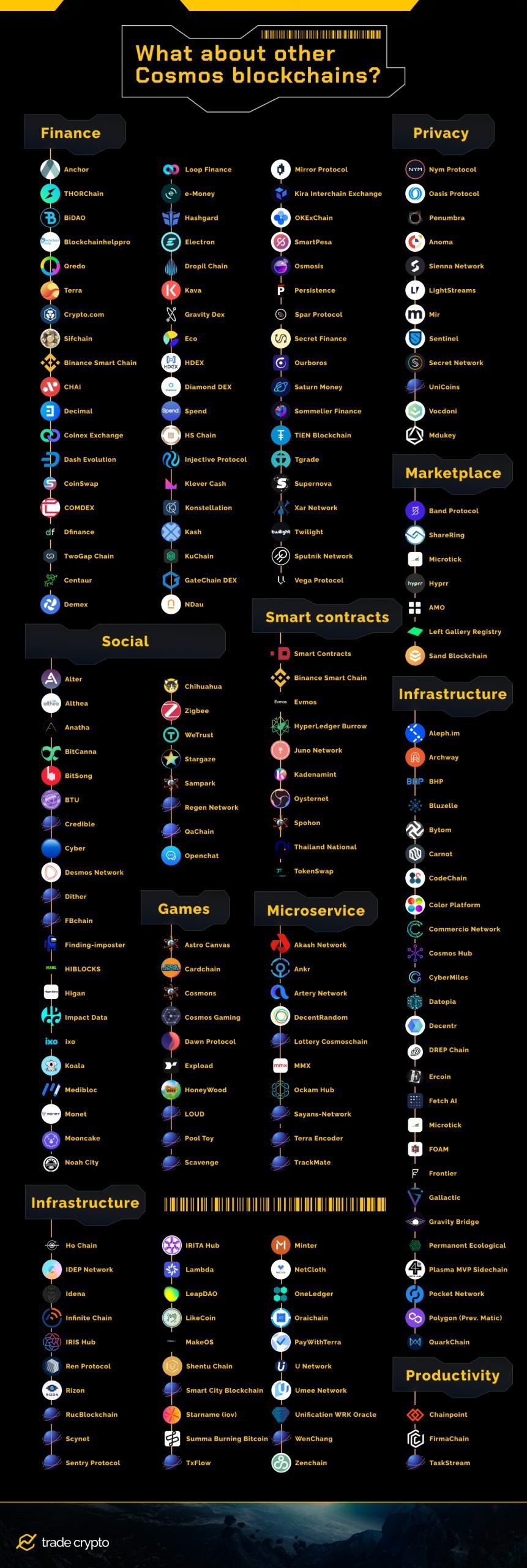
Many decentralized blockchains in the ecosystem were developed from scratch using Cosmos Software Development Kit and other built-in tools. They can easily exchange data, swap your assets, and even exchange fiat currencies by using the Inter Blockchain Communication protocol and oracles.
Some of the most famous Cosmos-based projects that you might have heard of include Binance Chain, Keplr wallet, Osmosis, Akash, Sentinel, etc.
Ethereum vs. Cosmos
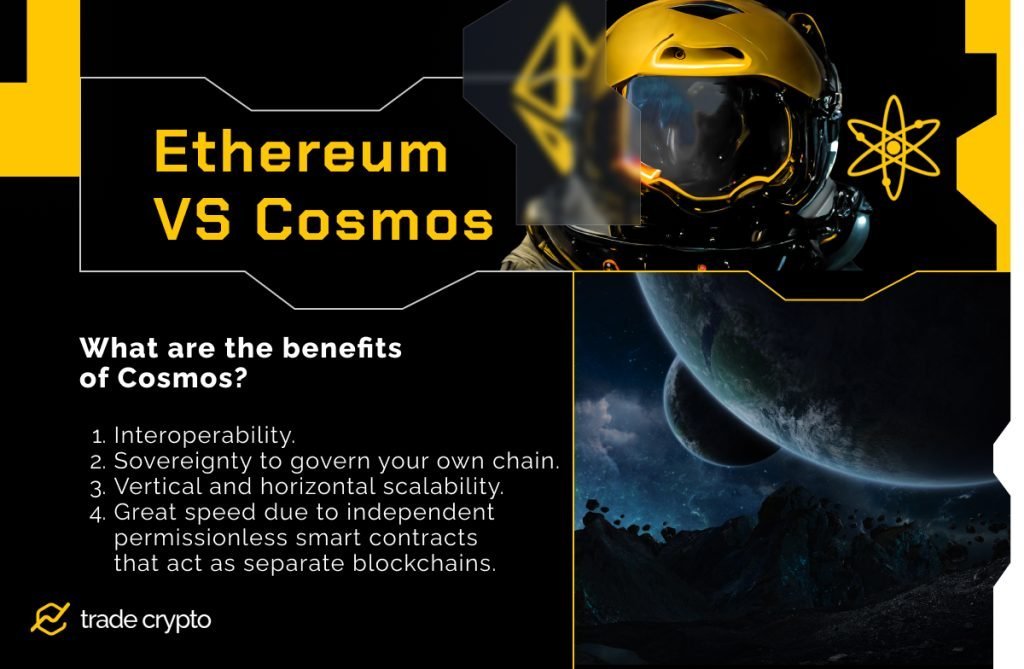
Even though the Cosmos team officially states that they “do not intend to act as a drop-in replacement of Ethereum,” the two networks are often compared. And to be fair, such a comparison is not in favor of the Ethereum chain.
The thing is, Cosmos provides a lot of functionality that Ethereum lacks. Most importantly, this is a well-designed tech stack that provides complementary blockchain development frameworks like Cosmos SDK. Such functionality allows developers to launch their own blockchains, which is not yet addressed in the Ethereum infrastructure.
Besides, Cosmos offers many other benefits that help it stand out among competitors like Ethereum or Polkadot:
- Interoperability;
- Sovereignty to govern your own chain;
- Vertical and horizontal scalability;
- Great speed due to independent permissionless smart contracts that act as separate blockchains.
On the other hand, the primary advantage of the Ethereum network is its popularity. Even though Cosmos is an extremely convenient ecosystem, it hasn’t reached the success of Ethereum yet.
Besides, due to the recent Merge, it is pretty hard to predict the speed and direction of the Ethereum network development, so any comparison would be pretty useless at this point. To understand the real picture, you should watch both protocols closely for at least a few months after the Merge event.
The future of the Cosmos ecosystem
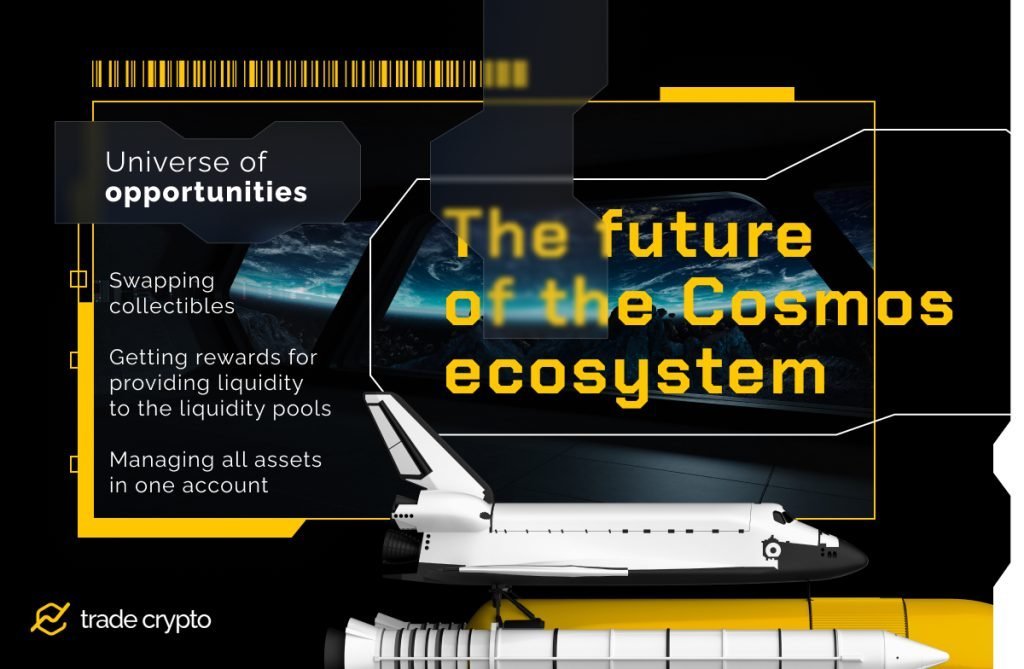
The Cosmos ecosystem is not settled yet – it keeps evolving day by day to become a full-fledged platform with very little competition in the market.
Even in times of recession, Cosmos empowers developers, project teams, and many other stakeholders, giving them the motivation to work on new blockchain products. Moreover, it provides all parties with the necessary tools for building high-quality tools, apps, and services on the chain.
Even now, the Cosmos ecosystem is a universe of opportunities. Developers can freely build and deploy new products, projects can apply for grants and get funded, contributors can become patrons, and traders can buy and sell whichever cryptocurrency they want and get extra profit from staking. So, is there more to come?
The short answer is – yes. Cosmos still has a lot of tricks up its sleeve and so many things to wait for in the near future. Swapping collectibles, getting rewards for providing liquidity to the liquidity pools, managing all assets in one account – these are just a few things to expect from this fascinating system.
Conclusion
Cosmos is one of the most successful blockchain ecosystems in the current market, that provides customizable, scalable, and interoperable solutions. It unites over 260 chains, apps, and services into one fully functional system, where data is securely stored and can be easily transferred.
Cosmos is powered by ATOM, a native utility and governance token of the ecosystem. It serves as an incentivization method for staking and can be found on all major crypto exchanges.
The Cosmos ecosystem is already a well-structured space with plenty of opportunities for many stakeholders, including blockchain developers, traders, project teams, and independent specialists. However, even more functionality is yet to come. That’s why you should definitely watch the Cosmos news closely and expect other innovative updates.
FAQ
What is Cosmos?
Cosmos is a powerful and scalable blockchain ecosystem that consists of 260+ interoperable chains, apps, and services. It contains hubs and zones that serve as application-specific blockchains.
Some of the most popular Cosmos-based projects include Binance Chain, Keplr wallet, Osmosis, Akash, and Sentinel.
The Cosmos ecosystem is powered by ATOM tokens, which provide high network security and allow token holders to earn on staking.
How do Cosmos inter-blockchain communications work?
Cosmos is based on the Inter-Blockchain Communication (IBC) protocol, which allows all chains, apps, and services within the ecosystem to exchange data. This technology enables data transfer, token swap, and free communication between different blockchains.
Is Cosmos better than Ethereum?
The Cosmos ecosystem was not created as a competitor or replacement for the Ethereum network.
At the moment, Cosmos provides certain benefits that make it stand out among competitors. These include a full-fledged development framework called Cosmos SDK, interoperability, great scalability, high speed, and sovereignty to govern your own chain.
What is the Cosmos price?
As of September 29, 2022, the price of Cosmos ATOM is $12.60. The 24-hour trading volume of the token is $419M, with a market cap of $3.6B. The total circulating supply of the Cosmos ATOM is over 286M tokens.
Why should I stake ATOM?
Staking ATOM allows you to validate transactions on the blockchain, create blocks, and enable high protocol security. As users pay transaction fees, you receive a certain percentage of these fees as a reward for validation. This way, you get more ATOM tokens to trade or stake.
Should I buy Cosmos ATOM?
Cosmos ATOM is the native token of the Cosmos ecosystem and has great potential. It is the focal point of the governance mechanism, as well as the incentivization system, which makes it a great asset for investing.
However, this article cannot be perceived as investment advice, and you should definitely conduct your own research before making any investment in crypto assets.
Crypto Ping Pong Digest
Trash style news. You will definitely like






